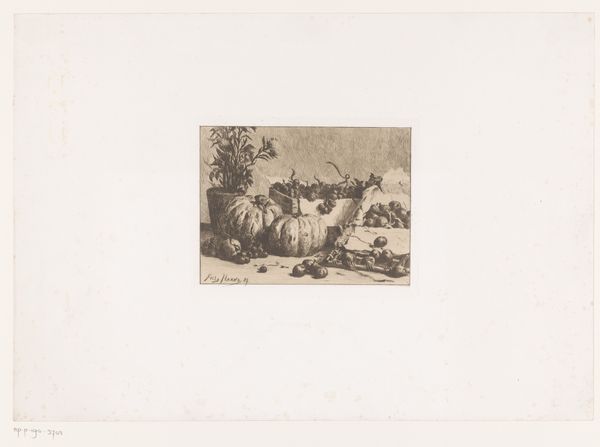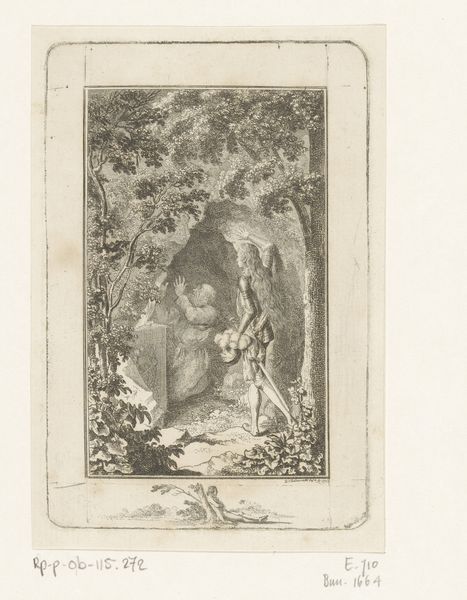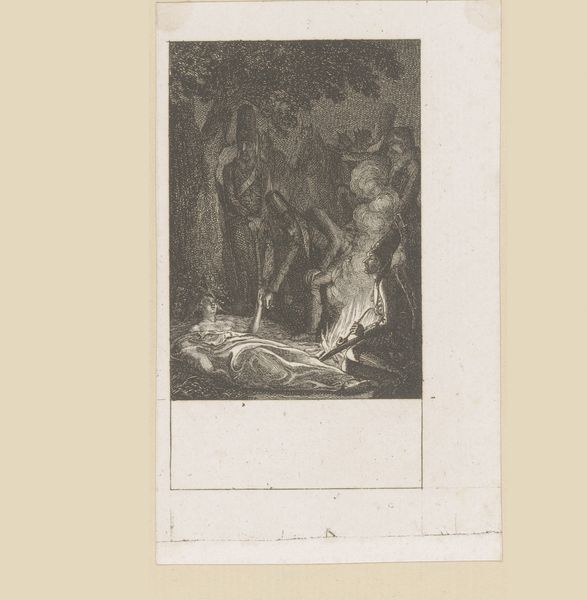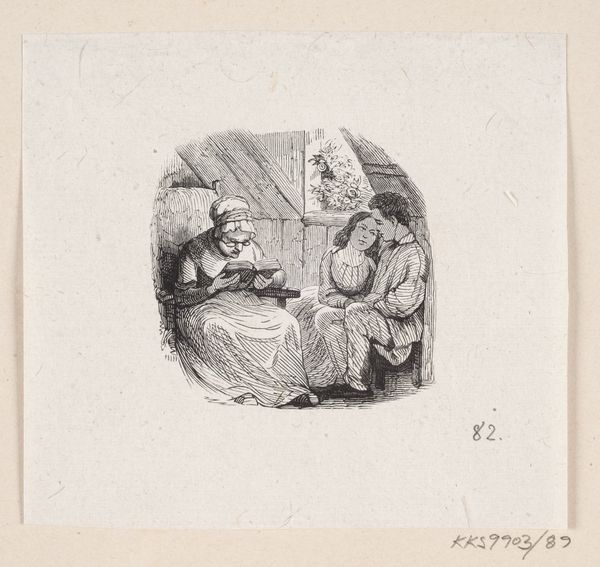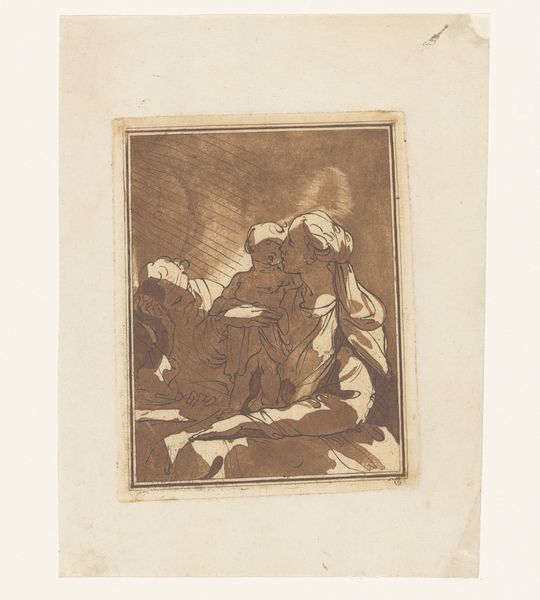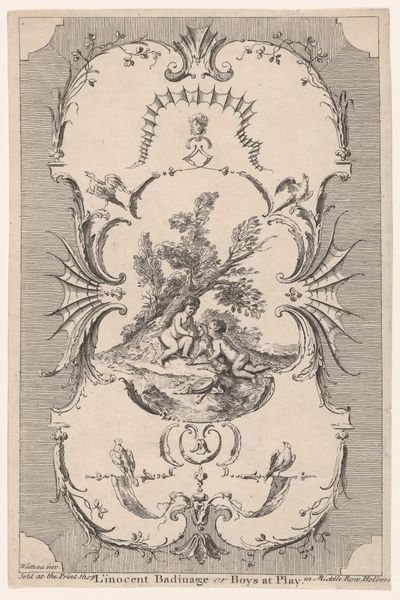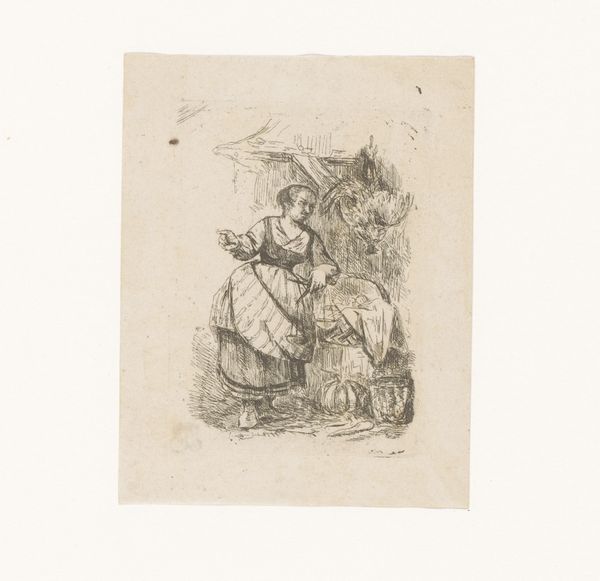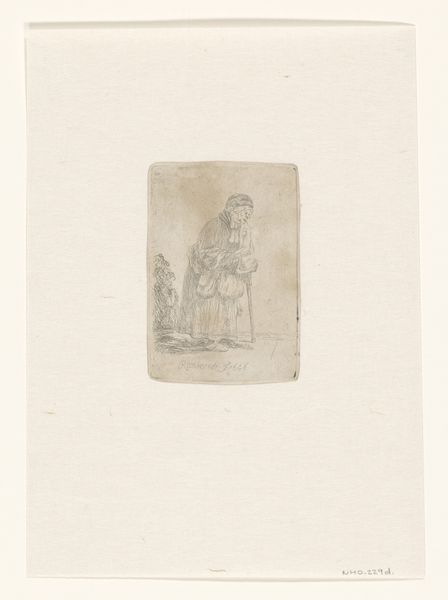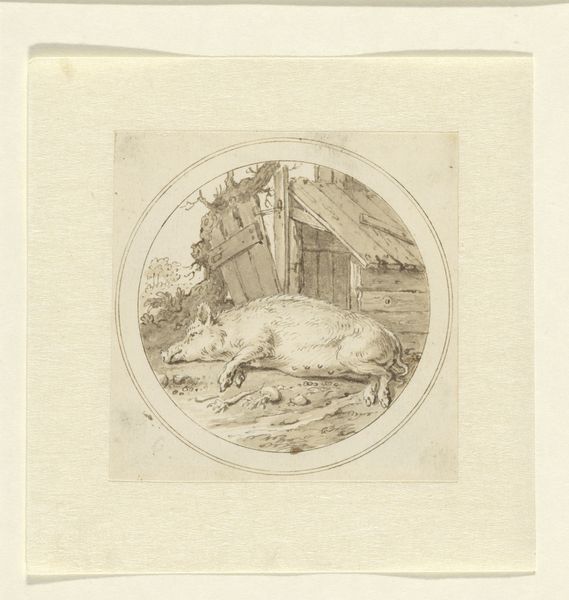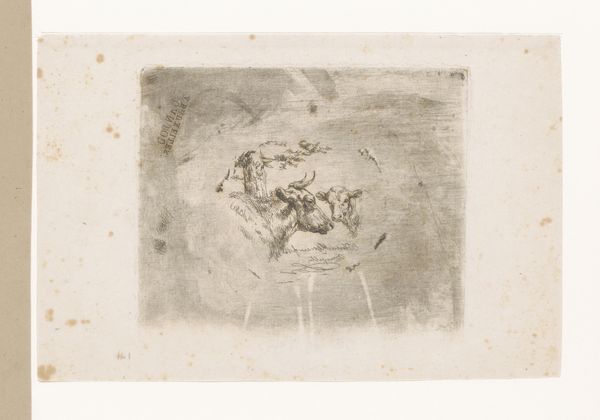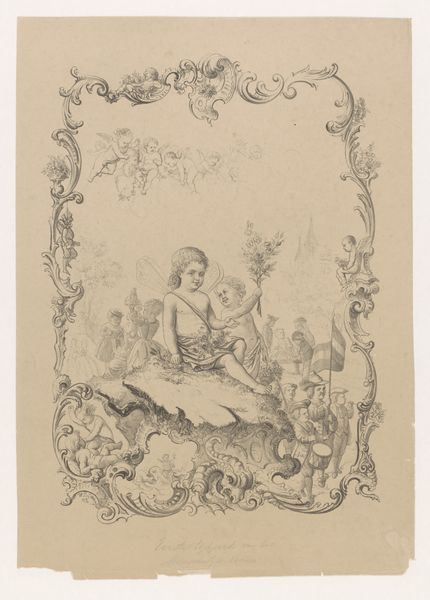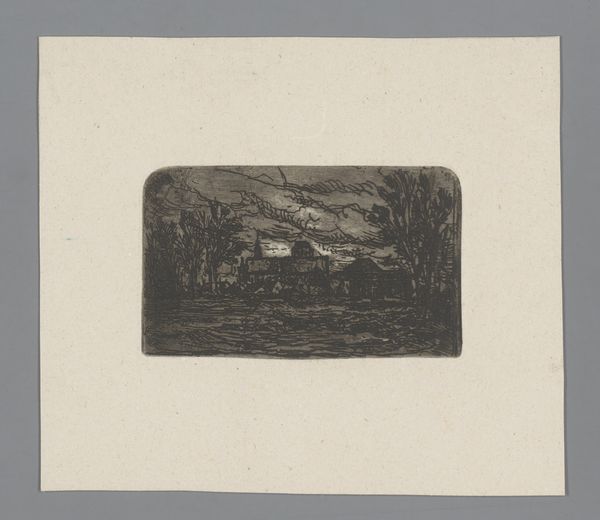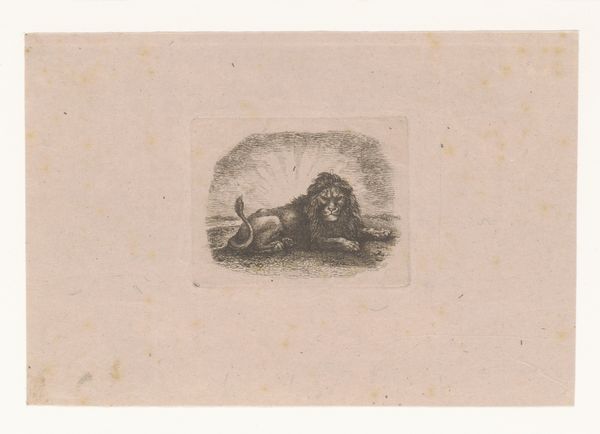
drawing, paper, pencil
drawing
organic
paper
coloured pencil
pencil
line
sketchbook drawing
Dimensions: height 210 mm, width 150 mm
Copyright: Rijks Museum: Open Domain
Curator: Julie de Graag created this artwork, "Schelp op tafel," sometime between 1887 and 1924. It's a pencil and colored pencil drawing on paper, currently held in the Rijksmuseum collection. Editor: Immediately, I notice the striking contrast between the sharply defined shell and the almost dreamlike, soft background. There's a delicate balance here; the textures seem to whisper of a fleeting moment. Curator: De Graag's work emerged during a period of significant change in Dutch art, where artists began experimenting with more simplified forms and a focus on subjective experience. There was an attempt at redefining traditional art categories, of what belonged to the domestic space and public art. Editor: And the shell itself—such a loaded symbol. In art, it often represents pilgrimage, birth, and sensuality, all intertwined with ideas of protection and vulnerability. The way she places flowers feels deliberate, as if this composition is supposed to evoke the transient quality of life. Curator: It’s true. De Graag would later explore woodcut, though here it’s all very fine lines and meticulous shading which does feel symbolic of fleeting natural scenes. But there is more at play. By choosing a common object like a shell, the artist engages the viewer to reevaluate their assumptions of subject matter and to explore the aesthetics within. Editor: Absolutely. The drawing reminds me of vanitas traditions—these meditative objects meant to symbolize life's impermanence and the beauty found in nature, but without the darkness typical to vanitas still life works. The very plain style combined with a complex symbol is interesting, almost creating a sense of a modern-day memento mori. Curator: The reception to the artwork reflected the shifting perspectives within artistic circles, a willingness to appreciate these contemplative glimpses that explored our relationship to material reality. Editor: It lingers in the mind long after you see it, which suggests its symbolic potency—it encourages us to pause and see beauty in simple, ordinary things. Curator: Indeed. By bridging realism with suggestive composition, De Graag invites us to contemplate our individual relationship to time and place.
Comments
No comments
Be the first to comment and join the conversation on the ultimate creative platform.
